Edible screen or hedge needed
tsuka
14 years ago
Related Stories

EDIBLE GARDENS12 Essential Herbs for Your Edible Garden
Make home cooking and drinks even better with herbs plucked from your own backyard or windowsill pot
Full Story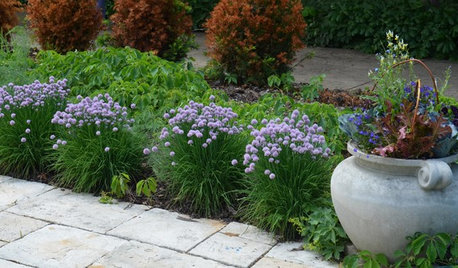
GARDENING GUIDESEdible Plants That Double as Ornamentals
Try growing these tasty plants with your ornamentals for an attractive garden and fresher meals
Full Story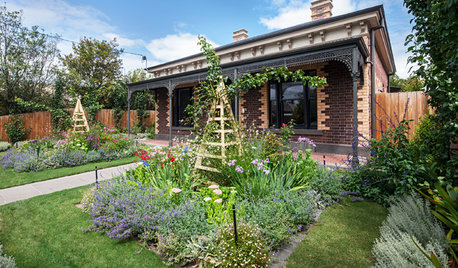
EDIBLE GARDENSAn Edible Cottage Garden With a Pleasing Symmetry
The owners of this cottage garden in Australia grow vegetables, herbs and fruit to delight their family and friends
Full Story
GARDENING GUIDESVegetables and Flowers Mix in Beautiful Edible Gardens
Ornamentals, meet your edible garden mates. We know you'll get along just beautifully
Full Story
EDIBLE GARDENSHow to Add an Apple Tree to Your Edible Garden
Readily available, beautiful and fragrant, apple trees offer four-season interest along with crisp, juicy fruit
Full Story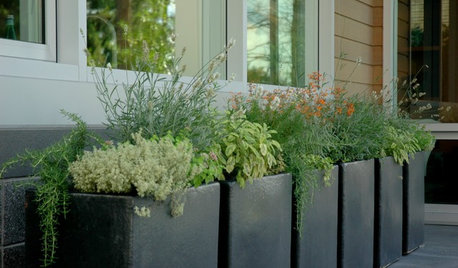
GARDENING AND LANDSCAPINGUnexpected Edible Gardens
How to grow your own herbs and vegetables almost anywhere
Full Story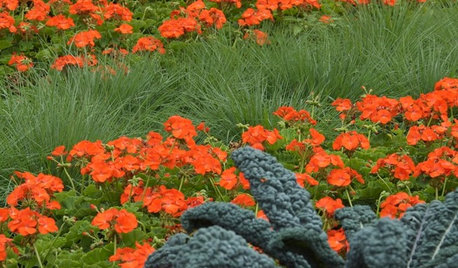
EDIBLE GARDENS7 Edible, Pretty Wonders of the Plant World
It's OK to like them just for their looks, but these flowers, trees and greens have a tasty side too
Full Story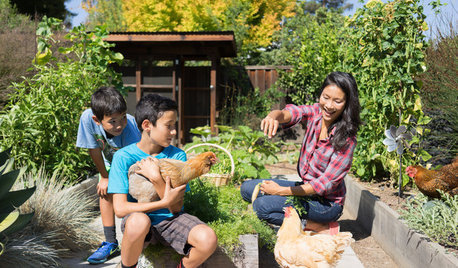
HOUZZ TV FAVORITESHouzz TV: An Edible Backyard in an Eichler Home
A family of 4 brings form and function to a Silicon Valley yard with vegetable gardens, chickens, beehives and more
Full Story
FARM YOUR YARDHow to Grow Vegetables in Containers
Get glorious vegetables and fruits on your patio with a pro’s guidance — including his personal recipe for potting mix
Full Story
FRONT YARD IDEAS10 Ideas for a Front-Yard Edible Garden Your Neighbors Will Love
Choosing attractive, well-mannered plants and sharing the bounty will go a long way toward keeping the peace
Full Story








George Three LLC
jordan_and_slippy
Related Professionals
Arlington Landscape Architects & Landscape Designers · Hartford Landscape Contractors · Salem Landscape Contractors · Aloha Landscape Contractors · Bridgeview Landscape Contractors · Fort Hunt Landscape Contractors · Fuquay-Varina Landscape Contractors · Metairie Landscape Contractors · Oklahoma City Landscape Contractors · Seven Hills Landscape Contractors · Snoqualmie Landscape Contractors · St. Louis Landscape Contractors · Charlotte Fence Contractors · Memphis Fence Contractors · Saratoga Springs Fence ContractorsEmbothrium
Embothrium
George Three LLC
Embothrium
larry_gene
George Three LLC
Embothrium
hemnancy
tsukaOriginal Author
larry_gene
Embothrium
larry_gene
gardengal48 (PNW Z8/9)
Embothrium
schizac
Embothrium
gardengal48 (PNW Z8/9)
Embothrium
larry_gene
George Three LLC
gardengal48 (PNW Z8/9)
Embothrium
gardengal48 (PNW Z8/9)
hemnancy
brody
schizac
larry_gene
JudyWWW
Embothrium